Your Best Friend YOUR PET
August 2023

A community-centered guide to pet care, resources, rescues and more!


































For over 80 years, we’ve been guided by the belief that pets and people are better together

SPONSORED BY:


CONTACT:



WHEN A NEW PET DIET MAY BE NECESSARY


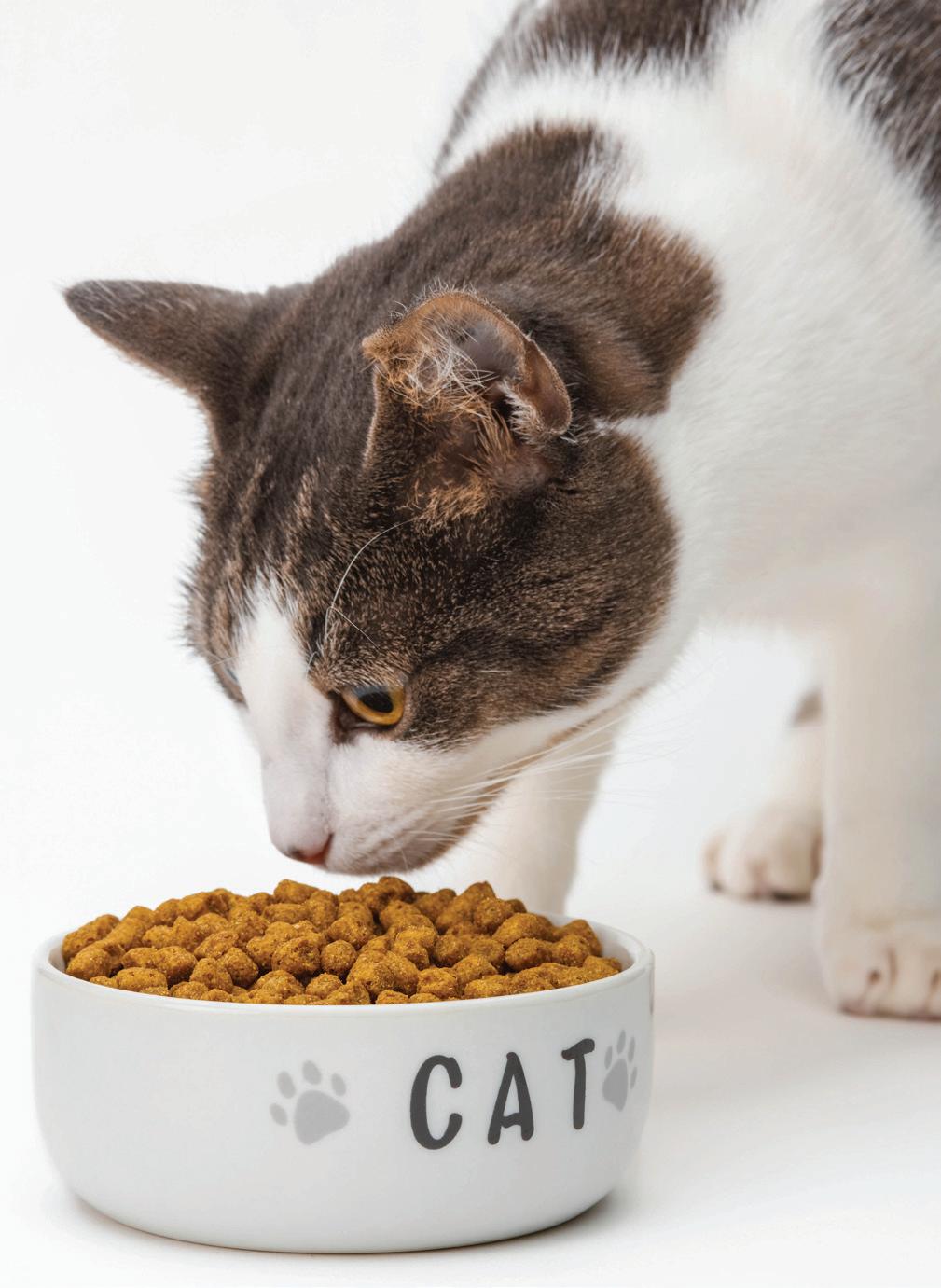
Courtesy of Metro Creative ConneCtion
Pet diets are more elaborate than ever. Where once a few brands dominated the pet food market, now a trip to the pet store yields dozens of options. Fish food, choices for small animals and rep tiles and meals for birds are seemingly just as diverse. Pet parents may consider food options carefully when making initial decisions concerning what to feed their pets, even consulting their veterinarians about their options. But even after careful consideration, pet owners may ultimately need to change their furry friends’ diets. Here are some instances when a dietary overhaul may be necessary.

Lakeshore Humane Society

www.lakeshorehumanesociety.org
• Lethargy and weakness: A pet who is suddenly acting lethargic and weak may need a change of diet. Certain foods high in antioxidants can help boost immune system response and help pets fight illnesses or recover from surgeries, while others may cause nutritional deficiencies. Consult with a vet for an evaluation before making any changes.
• Life stage: Certain formulations of food are designed for stages of development. For example, puppy foods have a specific profile for feeding fast-growing pups, and also may be recommended for pregnant or nursing mothers. Adult formulas and senior formulas have recipes for those stages of life (i.e., fewer calories or certain nutrients for joint health). When a pet crosses a life stage, a new food may be recommended.
• Illness diagnosis: Vets often recommend certain diets based on the presence of disease or illness. A cat that is diabetic may need a food that helps manage that disease. A dog with kidney disease or the presence of crystals in its urine may require a food that helps treat urinary issues.

• Weight control: Concern over a pet’s weight gain or weight loss could warrant a change to its diet. There are special foods designed to help animals maintain healthy weights.

• Allergies: Pets may experience allergic reactions to environmental triggers or ingredients in food. If a vet has ruled out other causes for itchy skin, loss of fur/feathers or other allergic symptoms, a new food may help alleviate symptoms.
• Loss of interest: Sometimes pets no longer enjoy eating the food they have been consuming for a while. Subtle changes in the formulation may be off-putting or boredom with a diet could set in. While owners shouldn’t change pets’ diets every time an animal turns up its nose at feeding time, a different flavor or food could add some welcome variety.
A change in a pet’s diet may be warranted in certain instances. Always seek the advice of a veterinarian before changing a pet’s diet.
AVAILABLE
FOR ADOPTION Stormy
M-F 10-8pm, Sat. 10-7pm, Sun. 11-5pm www.justpetsonline.com 393 Rts 5 & 20 Irving NY 14081 716-934-2780 Fish to Felines, Pups to Parrots, See Us for All of Your Pet Supply Needs and Stop in to Shop the Gift Shop!! Pet Food | Treats & Toys | Habitats & Bedding | Travel Crates | Grooming Supplies | Supplements | Special Diets | Collars & Leads | Pet Clothing | Training Aids
WHAT TO KNOW ABOUT HAVING A BIRD AS A PET
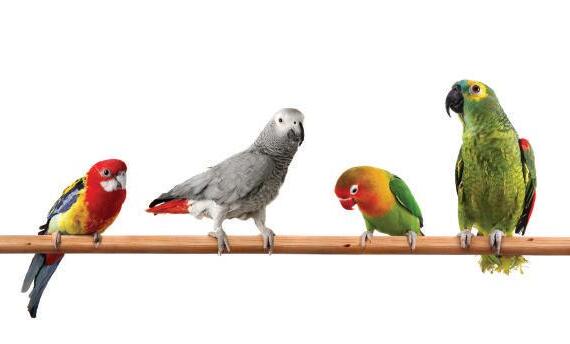 Courtesy of Metro Creative ConneCtion
Courtesy of Metro Creative ConneCtion
Pets make wonderful additions to a home and family. One of the best things about welcoming a new pet into a home is that no two pets are the same, which means pet owners will get an entirely unique experience each time they bring a new animal into their home. Birds are among the most unique pets. Brightly colored feathers give pet birds their own distinctive look, but there’s more to birds than just vivid plumage. Individuals considering adopting or purchasing a pet bird can consider these needs and character traits commonly associated with birds so they have a good idea of what to expect.
• Birds have unique veterinary needs. The American Veterinary Medical Foundation notes that pet birds have special veterinary needs, and recognition of those needs can help prospective bird owners determine if a pet bird is for them. The Association of Avian Veterinarians (aav.org) can help individuals find an avian veterinarian in their area, and such professionals can discuss the unique veterinary needs of various bird species. Familiarity with those needs can ensure individuals pick the right bird for their lifestyles.
• Most pet birds are diurnal species. The AAV notes that most pet birds awake at dawn and settle in to sleep at dusk. Prospective bird owners should be comfortable with and willing and able to accommodate that sleep-wake cycle. If they can’t accommodate that, a pet bird could suffer as a result. The AAV reports that artificially long days resulting from household lights or televisions can cause sleep deprivation in birds and compromise the bird’s health. Before buying a pet bird, prospective owners should recognize that birds are generally best when they get between 10 and 12 hours of sleep per night.
• Birds need exercise. Pet birds live well in a cage, but that does not mean they don’t need exercise. The AAV notes that birds need exercise to maintain their cardiovascular and respiratory systems. The AVMA recommends choosing a cage that affords birds space to climb, walk around and fly. Some cages may restric owners to provide supervised access to an adequately sized exercise area outside of the cage. The AAV notes that bird owners should be conscious of the potential for trauma if exercise rooms into. If possible, find a room where this risk is minimal. Provide acce does not feature ample room for the bird to fly.
• Birds can be trained. Individuals may associate pet training with dogs, but birds, and their owners, can benefit from training, too. The AAV recomm based training over punishment-based training good resources for bird training include Goodbirdinc.com and the International Association of Avian Trainers and Educators (iaate.org.)


Birds make for wonderful pets. Recognition of their unique traits and needs can help prospective bird owners understand what bird ownership will be like.

Culligan provides water solutions while minimizing the impact on the environment.







• Bottle-Free is hassle-free
• No more lifting bottles
• Better for the environment
• May save you money
Culligan also offers Ultraviolet Water Filtration as a way to filter water with no chemicals or salt required. Culligan’s UV systems reduce the carbon footprint and are low maintenance.
Have a certified water specialist test your water. Limited time offer. Dealer participation may vary. FREE Water Test! CALLTODAY! LIMITED TIME OFFER!
Culligan Water Conditioning of Dunkirk, NY GetCulligan.com • 716-679-7880 161 E. Main Street • Fredonia, NY AVAILABLE FOR ADOPTION Forrest SPONSORED BY: CONTACT: www.caninerescue.org
AFFECTING HOUSE CATS
 Courtesy of Metro Creative ConneCtion
Courtesy of Metro Creative ConneCtion





Cats are beloved pets across the globe. In 2020, there were roughly 53 million cats owned as pets in the United States and Canada combined.
Cats are admired for their can-do attitudes. They’re independent, quirky and often clever. While some people may describe cats as aloof, plenty of pet cats desire daily affection and cuddle sessions with their pet parents.
It’s important for cat owners to familiarize themselves with common feline behaviors and personality traits. That familiarity can help cat owners recognize when something may be “off” with their cats. While cats are good at self-care, there are times when owners must step in and offer assistance.
Here’s a look at common conditions that can affect pet cats.

• Tick-borne diseases: Cats may not spend as much time outdoors as dogs, but they still can pick up ticks if they are let out from time to time or cohabitate in homes with dogs. Ticks can carry various illnesses, but bobcat fever (cytauxzoonosis) is one to be concerned about. It’s quite serious and often fatal.

• Feline immunodeficiency virus (FIV): This slow-acting virus may not be noticeable until the disease makes the cat ill years after initial infection. A weakened immune system can open the cat up to a number of other illnesses and secondary infections. With good care, a cat could live months or years before the chronic stages of FIV.
• Vomiting: Cats groom themselves and can get fur stuck in their throats and digestive tracts, producing hairballs that are ultimately spit up. However, cats may vomit for other reasons, including ingesting something poisonous or dangerous, like string. Cats that are vomiting often can become dehydrated, which could lead to a medical emergency.
• Feline urinary tract diseases (FLUTD): The pets division of WebMD indicates roughly 3 percent of cats visiting vets are diagnosed with FLUTD. Cats can develop it for a variety of reasons, including stress in a household, eating dry food, and being overweight. It’s always an emergency if a cat can’t urinate or has pain doing so.
Cat owners may lament fleas, as they can be a problem and spread fast. A cat is at risk of developing anemia if it becomes infested with fleas. Topical treatments and oral medications can help prevent or eradicate fleas.
The ASPCA warns that, like dogs, cats can get heartworm from the bites of mosquitoes. Despite its name, heartworm primarily causes lung disease in cats.



• High-rise syndrome: Cats that reside in urban areas in multistory homes may be susceptible to falls. Windows without screens or where screens are not well-secured can pose risks to curious cats who want to take in the sun and fresh air. Falls can cause serious injuries, even death. The problem has become so prevalent that vets gave the condition the name “high-rise syndrome.”
Cats are susceptible to various illnesses and injuries. Awareness of these conditions can help cat owners protect their cats more effectively.
COMMON CONDITIONS
www.library16407.com 203 North Center St. Corry, PA 16407 (814)-665-9464 AVAILABLE FOR ADOPTION
CONTACT: Northern Chautauqua Canine Rescue www.caninerescue.org PEPPER
SPONSORED BY:
Courtesy of Metro Creative ConneCtion
Mental health issues have garnered some much-needed attention in recent years. As the world confronted a global pandemic, the mental health cost of that confrontation proved significant, prompting millions of people to speak openly about mental health for the first time.
Much of the conversation surrounding mental health conditions in recent years has focused on the human toll those conditions have taken. But mental health issues, including anxiety, can affect pets as well. According to the American Kennel Club, dog anxiety can affect all breeds. As a result, it behooves all dog owners to learn about dog anxiety so they can be in the best position possible to help their furry friends.
What is anxiety?
The anxiety dogs feel is not much different than that felt by humans. Merriam-Webster defines anxiety as “apprehensive uneasiness or nervousness over an impending or anticipated ill.”
Although the AKC acknowledges that all dogs feel anxiety at one point or another, the organization warns that disproportionate levels of anxiety that go untreated can produce an anxiety disorder in dogs. Such disorders can pave the way to behavioral and other issues.

What causes anxiety in dogs?

The Merck Veterinary Manual indicates that fear, separation and aging are some of the most common causes of dog anxiety. Some dog owners may recognize that their dogs are fearful of loud noises, strangers (including both people and animals they don’t recognize), veterinary visits, and certain visual stimuli. Though that fear is often temporary, it could lead to significant anxiety in some dogs.
The AKC estimates that around 14 percent of dogs are affected by separation anxiety. These dogs cannot be comfortable when their owners leave, and they may engage in various negative behaviors as a result. Such behaviors include chewing or destroying furniture, urinating or defecating in the home even if they’ve been trained, and excessive barking.
Age-related anxiety has been linked to cognitive dysfunction syndrome, or CDS. In such instances, dogs with CDS experience anxiety as they deal with issues affecting their memory, perception and awareness.
What are some symptoms of anxiety in dogs?


The AKC advises dog owners to be on the lookout for these important symptoms of dog anxiety:
• Aggression
• Urinating or defecating in the house
• Drooling
• Panting
• Destructive behavior
• Depression
• Excessive barking

• Pacing
• Restlessness
• Repetitive or compulsive behaviors
Anxiety can be a serious issue for dogs that adversely affects their quality of life. Various approaches can be tried to treat dogs with anxiety. Dog owners who suspect their dogs are experiencing excessive anxiety are urged to discuss their concerns with their veterinarians.

SIGNS
IN DOGS 111 Eagle St., Dunkirk, NY 14048 Phone: 716-366-2886 FAX 716-366-1280 We Give Your Vehicle Loving Care! Trust our professionals to keep you on the road all year! Jasper SPONSORED BY: NICHOLS HOMETOWN SERVICE CONTACT: www.caninerescue.org
Of ANXIETY
SPONSORED BY:

ILLNESSES COMMON TO PARTICULAR PURE BREEDS
Courtesy of Metro Creative ConneCtion
Dogs are faithful companions that can bring joy to the lives of many people. There are a number of breeds to consider when individuals and families decide to welcome a dog into their homes. In fact, people may be attracted to certain breeds due to their appearances or behavioral traits. For example, Golden retrievers are one of the most popular family dogs for good reason, as they are patient and more easily trained than other breeds.
It’s important to note that breed traits do not end with disposition. A dog’s breed could affect its health. Certain breeds are predisposed to genetic conditions. The following are some examples, courtesy of Healthline, CBS News, Pet Wellbeing, and VetInfo.

• Labrador Retriever: These energetic and playful pups also are great picks for family dogs. Under-exercised Labs are prone to weight gain and increased risk of joint diseases due to obesi ty, including hip and elbow dysplasia.
CONTACT:
• Siberian Husky: Huskies are beautiful animals with fluffy tails and double coats. Their gazes can be cap tivating, as blue eyes are common with the breed. Huskies may be at risk for autoimmune skin disor ders.
• Great Dane: A Great Dane is among the tallest breeds. The large size of the animal means it has a shorter life expectancy than smaller dogs. Further more, large dogs like Great Danes and Saint Ber nards are vulnerable to a condition called “bloat.” When a dog is suffering from bloat, liquid and gases become trapped in its stomach, making it swell and twist, essentially suffocating its internal organs.
facebook.com/westfieldstraycatrescue/




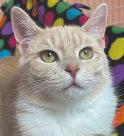
• German Shepherd: A highly intelligent working breed, these dogs are prone to hereditary hip dysplasia, as well as degenerative myelopathy. The second condition is an untreatable disease that results in progressive paralysis.
• Lhasa Apso: This shaggy breed requires eye care to remain in good health. Tearing is nearly constant and must be carefully cleaned away.
• Bulldog: The Bulldog as well as other breeds with short and pushed-in snouts, such as Pugs and Boxers, can experience respiratory problems if they are over heated.
• Yorkshire Terrier: These pint-sized pups are big on personality. They tend to have digestive issues, so extra caution may be necessary when choosing their foods.
• Cocker Spaniel: This spunky breed with a long, flowing coat is at risk for eye diseases, such as cataracts and glaucoma. Heart disease and kidney disease also are concerns.
Prospective pet parents should get to know diseases specific to certain breeds so they know what to expect when bringing a new dog into their homes.

AVAILABLE
FOR ADOPTION Niall
Available at: Lakeshore Humane Society (716) 672-1991 www.lakeshorehumanesociety.org
Molly Ruff
Courtesy of Metro Creative ConneCtion












Cat owners tend to be deeply devoted to their feline friends. Many factors inspire such devotion, not the least of which is the many quirky character traits cats possess.







Individuals considering adopting a kitten for the first time or even seasoned cat lovers may not know what to expect when bringing a feline home for the first time. That’s because no two cats are the same. However, quirkiness comes with the territory when welcoming a cat into a home, and prospective cat owners can expect to encounter these four common quirks as they prepare to welcome a cat into the family.





1. Kneading: Sometimes referred to as “making biscuits,” kneading may concern first-time cat owners, even though it shouldn’t. Kneading occurs when cats push out and pull in their front paws against a particular surface, such as a piece of furniture. The action resembles kneading dough and is a good sign that a cat is comfortable in its surroundings.
2. Walking in circles: Cats may walk in circles for various reasons. The online cats resource Faqcats.com notes that some cats circle their owners in excitement when their human companions return home from work or other errands. However, cats may walk in circles to show dominancy or because they’re in pain or suffering from an illness such as vestibular disease. Vestibular disease affects the inner ear of cats, particularly older ones. Cats also may walk in circles while suffering from ear infections, hypertension or head injuries. So cat owners who suspect their cat isn’t walking in circles out of excitement to see them should bring those concerns to the atten tion of their veterinarians.

3. Hunting: Cats can be fascinating creatures to observe, and that includes their fondness for hunting, even if they’ve already eaten or know where their food is. The online cat resource Catster.com indicates that cats’ eyes are designed to detect movement, so it shouldn’t be a surprise or a cause for concern if they’re suddenly stimulated by something that moves and go into hunting mode.
4. Staring at blank walls: One of the more curious and common quirks cats exhibit is the tendency to stare at walls for lengthy periods of time. Cats nat urally have a wider peripheral vision than humans, so it’s possible that a cat staring at a seemingly blank wall is actually seeing something on its periph ery that its owner can’t see. Cats also can hear better than their human com panions, so they might be staring at a wall because they can hear something their owner can’t. Cats also might stare at a wall where they had seen something earlier, such as a shad ow, and are now awaiting its return. Some older cats may stare at walls out of confusion, which is a potential warning sign of cat dementia. However, in most instances there’s nothing abnormal about a cat staring at a wall for a lengthy period of time. Cats are quirky, and many of those quirks are part of what makes cats such enjoyable pets.
4 QUIRKS COMMON TO CATS LOCAL TIRE EXPERTS VEHICLE TIRES UTILITY TIRES ATV TIRES TRAILER TIRES CHECK OUT OUR PRICES LAWN CARE TIRES Mon.-Fri. 8am - 5pm; Sat. 8-Noon Complete Brake & Exhaust Service! NYS Inspections Make Sure Your Tires Are Safe For Driving ROUTE 20 & 60, FREDONIA (Right Next To Wendy’s) DISCOUNT TIRES B&S 716-672-4389 AVAILABLE FOR ADOPTION Prince SPONSORED BY: CONTACT: www.caninerescue.org DISCOUNT TIRES B&S
SPONSORED BY:
Courtesy of Metro Creative ConneCtion
Cats and dogs may never be knocked off their perch as the most popular pets. And while it’s impossible to argue the appeal of cats and dogs, some animal lovers are partial to exotic pets.

Exotic pets are unique and often fascinating creatures, which explains some of their appeal. That appeal grows even more after pet owners welcome an exotic pet into their families. Many different animals are categorized as exotic pets, and the following rundown can help prospective pet owners determine which one to bring home.
CONTACT:
Lakeshore Humane Society



• Amphibians: The organization Amphibian Ark (AArk), which is dedicated to ensuring the survival and diversity of amphibian species, urges anyone considering an amphibian as a pet to first speak with their local wildlife agency to ensure it is legal to keep. AArk notes that cane toads, for example, are illegal in certain states. AArk also recommends asking for background health information on the animal, including how and where it was produced. Though amphibians are not considered high-maintenance pets, they will require a tank that provides access to both land and water, and that tank will require regular cleaning. AArk also notes the importance of not mixing species in a terrarium if the animals don’t live together in nature.
• Birds: Birds are a popular exotic species that make for undeniably beautiful pets. Prior to welcoming a bird into their homes, individuals should study up to learn some general things about birds and more specific characteristics of the particular species they want to adopt. The Association of Avian Veterinarians (AAV) notes that most birds are diurnal species, which means they awake at dawn and go to sleep at dusk. Prospective bird owners should be able to accommodate that sleep cycle, as a failure to do so can contribute to health problems for diurnal birds. In addition, birds thrive when they get ample interaction with their owners, so it’s incorrect to presume birds are hands-off pets.
www.lakeshorehumanesociety.org


• Insects: Insects tend to be low-maintenance, particularly compared to other exotics. However, WebMD notes that certain insects, such as tarantulas, can live as long as a decade, so they require a potentially significant commitment of time that may surprise people who have never before kept an insect as a pet. The Smithsonian Institution notes that certain insects, including field crickets, ant-lions and mealworms, make for practical pets.
Reptiles are sometimes sought out by individuals with pet allergies because they don’t have fur or feathers, which are triggers for many people’s pet allergies. Reptiles also require little daily attention, though WebMD notes that this might actually turn some people off to reptiles as pets. Since they require little attention, reptiles are not meant to be cuddled or held. In addition, certain reptiles can gain considerable size over the course of their lifetimes. Prospective reptile owners are urged to ask about how big a reptile may become before adopting it so they can be certain they can accommodate it as it grows and reaches maturity. Though various reptiles do not prefer to be held or cuddled, some still require significant effort. For example, since reptiles are cold-blooded, most will require ing to regulate their body temperature. In addition, the pet experts at Petco note that some reptiles require daily feeding, while others can thrive with a single weekly feeding.
Exotic pets can bring a lot of joy into a household. Anyone interested in owning such a pet should learn as much about a preferred species as possible prior to welcoming the animal into their homes.

0ona
& Storm Available at: Northern Chautauqua Canine Rescue (716) 326-7297 www.caninerescue.org THE VARIOUS TYPES OF EXOTIC
Glacier
PETS
AVAILABLE FOR ADOPTION Oscar
Lakeshore H umane Society presents

The 1 9th Annual Pat McGee M emorial Dog Wal k and Chicken BBQ –


Weidner’s Chicken BBQ –

Yard Sale this Saturday 9 – 5 & Sunday 9 – 3 @ Fairgrounds

Back by Popular Demand: Do g Costume Contest
Toxoplasmosis

BETWEEN PETS & PEOPLE
Courtesy of Metro Creative ConneCtion
Just like humans, animals can develop and spread illnesses. People who welcome pets into their homes may be concerned about transmission from pets to people as well as other animals to pets. To alleviate some fears, here’s some information about disease transmission among pets, people and other animals.
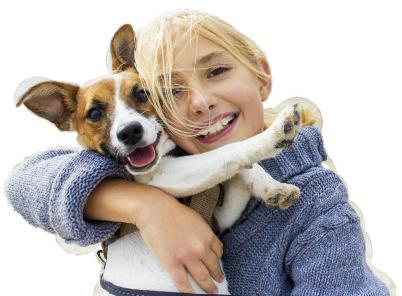
Heartworm

Heartworm cannot spread from pets to people, and humans rarely get heartworm. Heartworm cannot be caught from another pet like a cold or flu. It only spreads through mosquito bites. Two pets in the same household would each have to be bitten by infected mosquitoes to contract heartworm.
Roundworm and hookworm



These are parasites that can be found in dogs and cats. The worms’ eggs and larvae are passed from pets through stool. People can get hookworms through the skin by walking barefoot outside (a common reason why dogs tend to be off-limits on beaches during swimming season). Anyone may also accidentally eat roundworm eggs from touching the mouth or eating after inadvertently touching the eggs and failing to wash their hands.
Tapeworm
Tapeworm is an intestinal parasite that cats and dogs can get when bitten by an infected flea. However, humans contract it from eating contaminated meats.
Rabies
Although it’s essentially been eradicated from domestic pet populations, rabies remains a concern among wild animals. A bite or scratch to a human or pet from a wild animal is cause for concern and should be brought to the attention of a veterinarian.
Toxoplasmosis is a parasitic infection in cat feces that doesn’t produce symptoms in healthy adults, but is a concern for pregnant women and their unborn children.
Cryptococcosis and psittacosis

Cryptococcosis is a yeast present in bird droppings, especially from pigeons, that can cause pneumonia and meningitis in people with weak immune systems.
Individuals with pet birds should be aware of psittacosis, which is a bacteria that can infect pet birds. Someone who cleans the cage can become infected after breathing the dust from accumulated drop pings. Symptoms include coughing and high fever.
Leptospirosis


This disease typically spreads through the urine of wildlife. So dogs or cats that spend time outdoors may come in contact with contaminated urine from wild animals, or drink from contaminated puddles. Many vets now immunize against leptospirosis.
These are just a few of the illnesses that can affect pets, wild animals and humans. Proper hygiene, medical care and observation of symptoms should be paramount in homes with pets.

WHAT TO KNOW ABOUT DISEASE TRANSMISSION
MAIN STREET PIZZA 716-736-2222 Delivery Available GIFT CERTIFICATES AVAILABLE! Monthly Specials 66 West Main Street • Ripley, NY 14775 Hours: 7 Days, 11 am – 9 pm FULL MENU ON AVAILABLE FOR ADOPTION Charlotte
MAIN STREET PIZZA CONTACT:
SPONSORED BY:
facebook.com/westfieldstraycatrescue/
TYPES OF FISH THAT CAN SHARE A TANK
Courtesy of Metro Creative ConneCtion






Parents with more than one child know that sometimes separation is the best solution when kids aren’t getting along. Though that same approach can be applied to many pets, it’s likely not an option for people with fish tanks. Unless pet owners have a spare, clean and functioning fish tank on hand for those moments when fish aren’t playing well together, they’ll have to find species that can safely share the same tank.
The pet experts at PetSmart note that fish can become territorial, so there’s no guarantee that typically neighborly species will get along. However, the following are some species that should be able to share the same tank without issue.



• African cichlids: PetSmart describes these active fish in a somewhat paradoxical way, noting their territorial and aggressive tendencies while also noting they do better when crowded together. African cichlids should be monitored closely after introducing them to a tank and removed if they become too aggressive. When choosing a tank, pick one that’s at least four feet long.
• South and Central American cichlids: PetSmart notes larger varieties of these cichlids can be very aggressive and, unlike their African counterparts, do not do well in overcrowded tanks. When picking South and Central American cichlids, ask the pet store professional to select fish of similar sizes, diet and temperament. The tank for these fish should be able to accommodate their size as an adult.
• Community fish: As their name suggests, community fish are compatible when placed in a tank with other non-aggressive species. PetSmart notes that schooling species do best in quantities of five or more. Examples of community fish include rasboras, danios and cory cats.


• Semi-aggressive fish: Unlike community fish, the name of this category of fish suggests a peaceful tank might be difficult to establish. However, PetSmart notes that semi-aggressive fish can get along with others if all fish are the same size. But PetSmart urges fish owners to avoid pairing semi-aggressive fish with smaller fish, which can bring out their less friendly tendencies.

Fits in the smallest places Powerful to Cool The Larger Spaces! “Local Heating & Air Conditioning Experts!” 829 Brigham Rd. Dunkirk, NY 716-366-1700 www.casaleplumbingheating.com Plumbing Company Heating & Air Conditioning Services Air Conditioning/Heat Pump Units AVAILABLE FOR ADOPTION TINKERBELL SPONSORED BY: CONTACT: Lakeshore Humane Society www.lakeshorehumanesociety.org
AVAILABLE FOR ADOPTION
SOURCES OF PET PAIN
Courtesy of Metro Creative ConneCtion
When an animal is in pain, its owners may find it challenging to determine the root of its discomfort. Unlike people, companion animals cannot verbalize where it hurts or what is wrong. In fact, some pets may not even exhibit signs they are in distress. Cats, dogs and other domestic pets are prone to the same types of pain that humans experience, according to Animal Health Associates in Michigan. Pain may stem from illness, injury or other causes. Here’s a look at four potential sources of pet pain.
1. Underlying diseases
SPONSORED BY:
Diabetes, cancer and hyperthyroidism can cause pain in animals that may present as a lack of appetite in pets. Therefore, if your pet seems less enthusiastic at meal time, make an appointment with a veterinarian to rule out disease as the culprit.
2. Dental and oral issues
CONTACT:
Lakeshore Humane Society

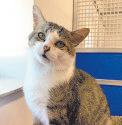
www.lakeshorehumanesociety.org

Gum disease, tooth infections, sores, and other oral issues could cause distress in a pet and also may compromise its ability to eat. Inadequate nutrition could make a pet weak, which leads to its own issues.
3. Arthritis and joint pain
Older dogs and those with genetic predispositions to conditions like hip dysplasia may have chronic pain. Difficulty getting up from seated or prone positions may showcase some of that pain. Pets with such conditions may not partake in activities they once enjoyed.
Animals recuperating from a surgery may experience pain. Veterinarians often prescribe pain medication to mitigate this issue, but some pain may bleed through. A pet in pain may be more lethargic or may be snippy and aggressive.
It could take some trial and error to determine if a pet is in pain. Any behavior that goes against the norm could be a sign of illness, injury or underlying pain.
DID YOU KNOW?
ental health is important when caring for pets. Many pet health experts say that a pet’s first professional dental examination and cleaning should occur at around age two or three. Ideally, pet parents should brush their pets’ teeth daily to ensure that plaque and tartar does not accumulate and lead to significant periodontal issues. Older pets tend to require more frequent brushings, while younger pets and small dog breeds may not need daily brushing. There are plenty of petsafe toothpastes available; do not use a human toothpaste, as such products contain ingredients that are not safe for pets. Pets should be acclimated to having their teeth brushed at an early age to make it easier to do so in ensuing years. In addition to brushing, pet owners can help their pets keep teeth clean by providing dental-friendly snacks and toys that can be chewed to scrub teeth. Also, feeding pets a nutritious diet that consists of some hard food to scour teeth during eating also is helpful. Some foods contain additives that help keep plaque from hardening into tartar, so speak with a dentist to see if this is appropriate for the pet’s needs.

Irish
ConneCtion
Creative
4
TIPS FOR

A FAMILY PET
Courtesy of Metro Creative ConneCtion
There are many reasons to welcome a pet into a household. Companionship, unconditional love and protection are some of the reasons people get pets. Parents also may want children to have pets so they develop a sense of caring and responsibility.


When shopping for a new pet, the right fit can make all the difference. Before bringing any animal into a household, it is important to ask a few pointed questions and conduct an honest assessment of various factors that can affect the animal’s well-being.
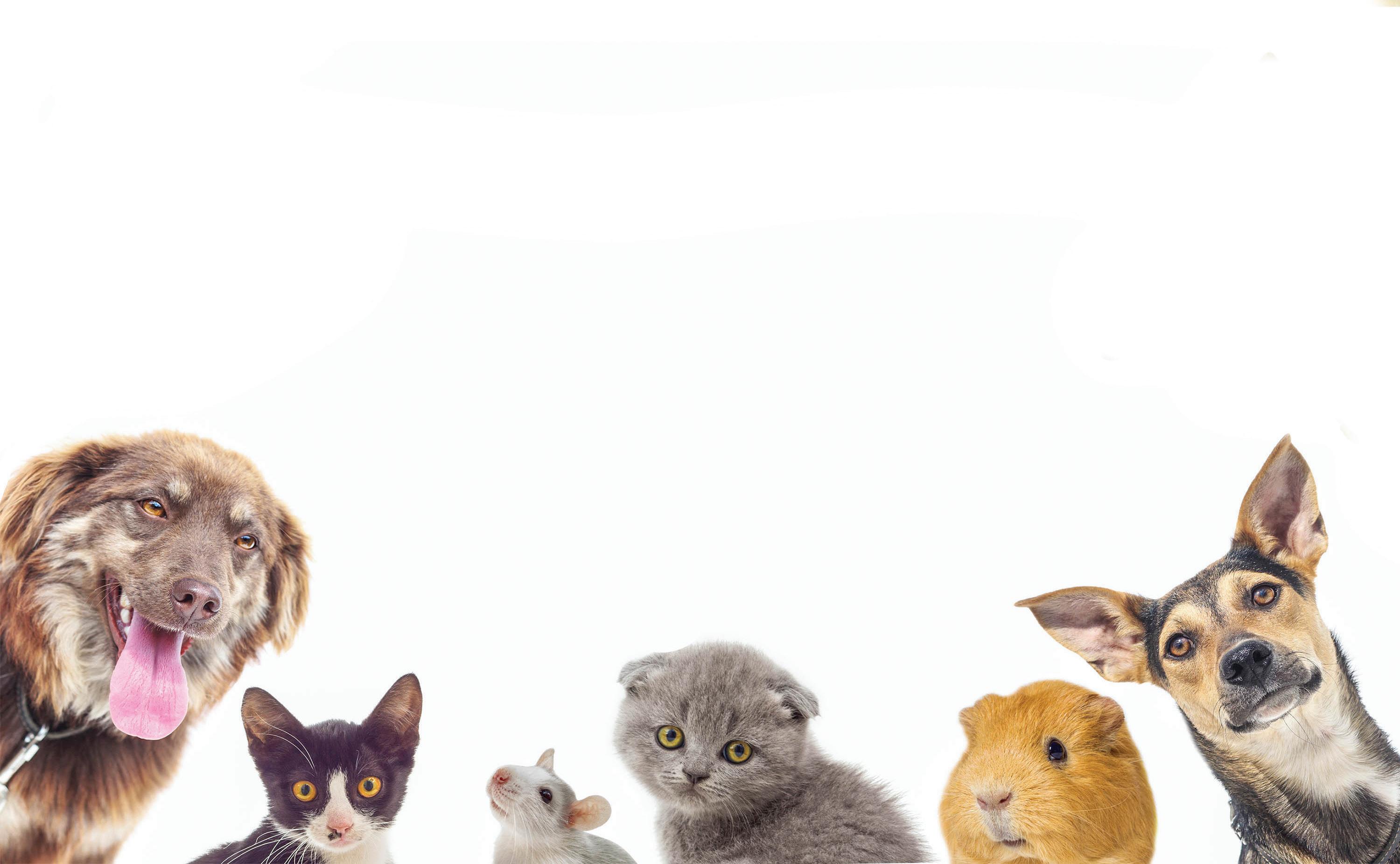
Assess budget first
Pets require different financial commitments. For example, a beta fish in a small tank will cost considerably less than a pet dog or a horse kept at a stable. Adults must consider what they can afford when it comes to pets, as each animal comes with a separate initial price tag and subsequent food and care costs.
Think about allergies
Dander, hair and feathers can trigger allergic reactions in children and adults, so certain pets may need to be avoided. Speak with a pediatrician or a veterinarian and ask for suggestions on which pets may work best.
Consider a child’s developmental stage
Children younger than age five or six may not be mature enough to view the pet as something other than a toy or plaything. Before committing to a pet, particularly one that will serve as a child’s companion, be honest about the child’s maturity level. Some pets may have easygoing temperaments, like family-friendly dog breeds, including beagles and retrievers. A parrot with a strong nipping instinct or a skittish cat may not be the best fit until children are older.
Look at family lifestyle
Families that go on frequent vacations or are involved in many after-work or extracurricular school activities may not have enough time to devote to pets that thrive on interaction. Rather, a pet that is comfortable in a habitat or cage or one that is mostly self-sufficient might be a better fit.
Research, research, research
Before making a commitment, families should conduct significant research on the pets they are considering. This way there will be fewer surprises. Look at information regarding pet/breed temperament, genetic illness predisposition, exercise requirements, veterinary checkup schedules, and immunizations, among other factors.



These recommendations can help families find pets that will thrive in their homes.

CHOOSING
Patty’s Pet Grooming Grooming ~ Boarding ~ Daycare 11171 Urban Road, Dunkirk, NY 716-366-1207 Dog’s Welcome • Doggy Daycare • Boarding • Baths & Brush Outs • Pedicures • Grooming Board with us in our clean & safe facility. Our loving staff will take good care of your pet! AVAILABLE FOR ADOPTION Lucy SPONSORED BY: Dog’s Welcome Patty’s Pet Grooming Grooming~Boarding~Daycare CONTACT: Northern Chautauqua Canine Rescue www.caninerescue.org
WANT YOUR PET TO BE HAPPY WHEN THEY COME THROUGH THE DOOR AT OUR CLINIC. EVERY EMPLOYEE IS A CERTIFIED FEAR FREE PROFESSIONAL, COMPLETING BOTH A COMPREHENSIVE TRAINING PROGRAM AND EXAM.






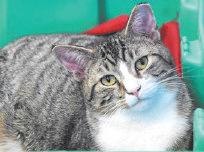










AVAILABLE FOR ADOPTION www.lakeshorehumanesociety.org Abby THESE CATS SPONSORED BY DUNKIRK ANIMAL CLINIC Sugar Rascal Luna Jiffy Bramble FROM Lakeshore Humane Society 264 LAKESHORE DRIVE WEST, DUNKIRK 716-366-7440 WWW.DUNKIRKANIMALCLINIC.COM
WE OFFER COMPREHENSIVE DIAGNOSTIC IMAGE SERVICES INCLUDING STATE-OF-THE-ART DIGITAL RADIOGRAPHY, ULTRASONOGRAPHY,
LASER
DIAGNOSTIC LABORATORY
WE
COMPANION
THERAPY AND A
IN HOUSE.






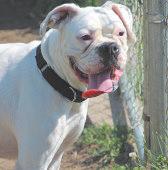







FROM THESE DOGS SPONSORED BY DUNKIRK ANIMAL CLINIC 264 LAKESHORE DRIVE WEST, DUNKIRK 716-366-7440 WWW.DUNKIRKANIMALCLINIC.COM
Honey Jake Lakeshore Humane Society www.lakeshorehumanesociety.org AVAILABLE FOR ADOPTION
Diamond Stormy Blu Sapphire
AVAILABLE FOR ADOPTION
WHAT TO KNOW ABOUT FELINE DIABETES
Courtesy of Metro Creative ConneCtion
No pet owner wants to imagine their furry friend falling victim to illness, but companion animals are not impervious to disease. In fact, various ailments typically associated with humans can affect pets as well.

Ralph
SPONSORED BY:
Diabetes is one condition that cat owners may want to learn about. According to the Cornell Feline Health Center, between 0.2 and 1 percent of cats will be diagnosed with diabetes during their lifetime. Though that’s a small percentage, cat owners can still make an effort to understand feline diabetes so they can spot its signs and help their cats avoid any potential risk factors for the disease.
What is feline diabetes?
CONTACT:
Lakeshore Humane Society
www.lakeshorehumanesociety.org
Much like their human owners, cats need sugar (glucose) for energy. Glucose in the blood needs insulin, which is a hormone the pancreas produces. The CFHC notes that insulin is used to “unlock” the door to cells. Insulin attaches to cells and indicates the right time to absorb glucose, which is used as fuel and leads to lower glucose levels in the blood. Type 1 diabetes occurs when insulin production is insufficient, leading to high concentrations of glucose in the blood. Type 2 diabetes occurs when glucose levels are elevated because the body’s cells are not responding appropriately to insulin. The CFHC reports that, in the case of both type 1 and type 2 diabetes, cells cannot access the nutrients they need because insulin cannot transport the sugar from the bloodstream into the cells that need it.
What are the risk factors for feline diabetes?

Some of the risk factors for diabetes in humans affect cats’ risk for the disease as well. For example, obesity and physical activity are two risk factors for feline diabetes. Being obese and living a sedentary lifestyle increases humans’ risk for diabetes as well. The link between obesity and feline diabetes is so significant that the CFHC indicates obese cats are up to four times more likely to develop diabetes than ideal weight cats.
But those are not the only two risk factors for feline diabetes. The CFHC notes that the use of glucocorticoids, a type of steroid sometimes used to treat feline asthma, could increase the risk for feline diabetes. In addition, PetMD reports that certain breeds of cats have been found to get diabetes more than others, which indicates that genetics could play a role as well.
AVAILABLE FOR ADOPTION
What are some symptoms of feline diabetes?
Weight loss and increased thirst and urination are two of the more common signs of feline dia betes reported by cat owners. The weight loss occurs even when cats exhibit a strong appetite. Though the CFHC indicates this is rare, in some instances cats with feline diabetes may expe rience nerve damage in the hind limbs. Though this isn’t painful, it may compel cats to walk or stand with their hocks on or close the ground.
Can feline diabetes be treated?
SPONSORED BY:


CONTACT:
Lakeshore Humane Society
www.lakeshorehumanesociety.org


The good news regarding feline diabetes is that the prognosis is good when the right steps are taken to manage the condition at home. A veterinarian may recommend a combination of insulin therapy and dietary changes. Insulin therapy typically involves insulin injections, but the CFHC notes that syringe sizes are typically so small that cats tolerate the injections quite well.
Feline diabetes may be something cat owners have never considered. The condition can affect any cat, and learning its ins and outs can ensure cat owners know how to respond if cats begin to exhibit symptoms of the disease.

Clover
Courtesy of faMily features
When four-legged friends are feeling under the weather, pet parents may feel helpless pinpointing exactly what’s wrong. Nurturing your pet’s gut health is one way to protect his or her immune system and to promote overall well-being.

Improve your pooch’s gut health with these tips from the pet experts at Solid Gold:
Recognize the Signs of a Potential Gut Health Problem
While many problems are readily apparent, gut health isn’t one of them. There may be some tell-tale signs like diarrhea or vomiting, but other symptoms like bloating or constipation may be harder to spot. Other signs of gut trouble might include fatigue, frequent licking, restlessness, changes in coat quality and luster, and weight fluctuations. Be sure to talk with your vet promptly if you observe any concerning symptoms.
Pay Attention to Ingredients
Choose a dog food with ingredients that promote gut health. For example, Solid Gold’s HundN-Flocken dog food is powered by NutrientBoost, a proprietary blend of ingredients packed with protein and nutrients that help canines thrive. It features crave-worthy taste and ingredients like amino acids, probiotics and proteins that support digestion, immunity and nutrient absorption. Each bite is made with a blend of high-fiber ingredients such as carrot, pumpkin and pearled barley to support digestive health.
Be Conscious of Allergens and Food Intolerance





Dogs can experience allergies just like people. Allergies that affect a dog’s skin are common, but you might also find your dog has trouble digesting certain foods, which can create inflammation and irritation in the gut. Allergy testing or an elimination diet (removing one potential allergen source at a time) can help pinpoint the problem.


Feed Probiotics to Promote Good Bacteria
Just like humans, dogs need a well-balanced microbiome. Probiotics build the microflora in your dog’s system, promoting the good bacteria that wages war on infections and harmful bacteria when needed. Probiotics can be especially helpful if your dog is prone to diarrhea or gas, or if he or she has recently received an antibiotic treatment that may have affected the natural gut flora. You can find probiotics in the form of food or supplements like Solid Gold’s Mellow Belly Gut Health Supplement, which is made with a powerful combination of natural digestive enzymes and probiotics to aid in proper diges tion. The entire collection of food and supplements are made with superfoods and probiotics to help support your pet’s immunity and get the most out of every day to keep him or her thriving.
Don’t Forget the Prebiotics
Many people are at least somewhat familiar with the role probiotics play in gut health, but not everyone knows about prebiotics. Prebiotics, which are a form of dietary fiber, function as a fertilizer or food source for probiotics, allowing helpful bacteria to multiply. Look for prebiotic treats, capsules, drops, powder and even specially formulated foods.
Manage Stress with Play and Exercise
If you’ve ever experienced digestive issues as a result of stress, you know mental and physical health go hand in hand. The same is true for dogs, so managing your dog’s stress level is an important step in helping regulate his or her gut health. Exercise is beneficial for your pet’s health in a variety of ways, including suppressing cortisol, which is an inflammatory hormone that may weaken the immune system. Find more tips and nutritional information to support your pet’s health at instagram. com/solidgoldpets.

6 TIPS FOR PROMOTING
GO
THE GUT STORER'S Container Service, Inc Excellent Customer Service. “It’s a Storer Thing” 7534 ROUTE 380, STOCKTON, NY 14784 • Professional Waste Hauling • Commercial, Residential & Small Business • 2-40 Yard Containers (716) 595-3186 AVAILABLE FOR ADOPTION Annabelle SPONSORED BY: CONTACT: Lakeshore Humane Society www.lakeshorehumanesociety.org
PET HEALTH
WITH
TO YOUR OTHER DOG
 Courtesy of Metro Creative ConneCtion
Courtesy of Metro Creative ConneCtion







The value dogs bring to a home is undeniable. Dog owners and their families may welcome a new dog with open arms because they recognize these pets provide unconditional love and can make their human companions smile no matter what else is going on in their lives. However, other dogs may be considerably less enthusiastic about rolling out the proverbial welcome mat to another furry member of the family.
In recognition of the potential difficulties of welcoming a new dog into a home where a dog already lives, the Humane Society of the United States and the American Kennel Club offer these suggestions to help dogs get along from the moment they meet.

• Make introductions on neutral territory. The HSUS recommends familiarizing dogs with one another outdoors. Outdoors is neutral territory, so a dog that’s already well-established in a home is less likely to feel threatened here than if it meets its new housemate indoors in an area it already thinks is its own. The HSUS recommends walking dogs separately on a leash during this introduction, ideally at a distance where they can see each other but are not provoked by the other’s presence. Carry treats and reward the dogs for seeing each other.
• Keep a watchful eye on body language. The HSUS notes that hair standing up on a dog’s back, teeth baring, growling, a stiff-legged gait, or a prolonged stare indicate a defensive or wary response from a dog. The sight of these postures merits an immediate interruption to the interaction. If dogs respond in a more relaxed and comfortable way during the introduction, the distance between them can be reduced, though owners should still be mindful of their body language.
• Recognize puppies and older dogs may react differently. are developing communication skills, so they may not recognize the rules that older dogs are trying to establish. So a puppy may be willing to play with an older, larger dog, while the older dog may growl at its younger companion. The AKC notes that this is alright so long as the older dog does not become aggressive and injure the puppy. Growling can help the younger puppy learn and can be an effective way for the older dog to communicate.



• Separate the dogs during initial inside introductions. The HSUS recommends using a sturdy and tall baby gate to separate dogs when introducing them inside. Watch how they interact with this barrier in place and reinforce positive interactions with treats.
Introducing a new dog to a home where a dog already lives can be challenging. But various strategies can help such interactions go smoothly.
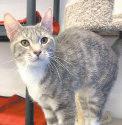
TIPS TO INTRODUCE A NEW DOG
Weidner’s We can bring our tasty BBQ with all the fixin’s right to you! Parties • Picnics • Birthdays Anniversaries • Retirements Fundraisers • Reunions Graduations • Weddings • Rehearsals Showers • Any Type of Gatherings Let us cater your event!! www.wnybbq.com 716-992-4362 AVAILABLE FOR ADOPTION Lilac SPONSORED BY: CONTACT: Lakeshore Humane Society www.lakeshorehumanesociety.org Weidner’s
TO ITS NEW HOME
Courtesy of Metro Creative ConneCtion












Cats have a special place in the hearts of millions of people. These wily rascals can be flirty, funny or even aloof. The personality of cats, coupled with their compact size, makes them ideal pets for homes of all sizes.
The American Society for the Prevention of Cruelty to Animals says approximately 1.3 million cats are adopted from animal shelters each year. However, of the cats entering shelters, only around 37 percent are ultimately adopted, according to the National Kitten Coalition. Individuals who adopt cats may want to take every step they can to make the relationship with a new companion animal work. That often means finding ways to help the cat feel comfortable by acclimating it to its new home. The length of time it will take to adjust to a new environment depends on the cat’s temperament. However, these tips can help.
• Pick a familiar item and bring it with you. Does the cat have a favorite toy, carrier or scratching post? Moving something into the home that has the animal’s smell may help him or her adjust more quickly.
• Select a room as a home base. Introducing the cat to the entire home and all of the people in it can be overwhelming. Rather, select a small room in the home, such as an office or laundry space, that the cat can call home for the time being. With the door closed, this small space can be comforting and let the cat learn the smells and sounds of the home before it ventures into other areas. Remember to visit often and provide plenty of love and affection as tolerated.



• Avoid lots of traffic. Now is not the time to host a house party. Remove stressors like large crowds, increased foot traffic and kids’ play dates. Loud sounds and sudden movements can put cats on edge.

• Don’t force the issue. The kitty will start to come around when he or she is ready. Don’t be compelled to pull the pet out from hiding under a bed or the cat set the pace.

























• Keep kids away. Young children tend to be boisterous and jerky, which isn’t a good mix with a skittish cat. While the cat is acclimating, keep young children away. When they are introduced, do so in small intervals and supervise carefully so the cat does not get hurt and chil dren are not accidentally scratched or bitten by a scared cat.
• Provide a quiet area. Perhaps that first room or a cozy nook can be the cat’s quiet spot. According to cat behaviorist Jackson Galaxy, cats need solitude and quiet time. A box or basket lined with soft, washable bedding in a corner can serve as a place for a cat to retire to.
• Introduce existing pets slowly. Existing pets should be introduced grad ually. Keep a dog confined until the cat feels secure in the home. altered cats can become friends in the same home. However, older cats often are more accepting of kittens than other adults. Keep this in mind when making introductions.



Cats are happiest when they’ve had time to settle and get used to surround ings in their new home. Once the adoption takes place, give the cat plenty of time to become comfortable in its new environment.

HOW TO ACCLIMATE AN ADOPTED CAT
RENT SUBSIDIZED BASED ON 30% OF ADJUSTED INCOME Come And See All We Have To Offer At 54 Central Ave., Brocton, NY Appliances Smoke-free Pet-friendly Cable-ready Low utilities Laundry facilities Covered patio area Service Coordinator 24/7 emergency repairs Well-lit off-street parking Attractive, Affordable Studios and 1-Bedrooms for Seniors Age 62 and Up Totally Electric - $30 Average Monthly Cost Hey We’re Pet Friendly At The Herbert Star Apartments Accepting Applications EQUAL HOUSING OPPORTUNITY INCOME LIMITS APPLY 1 PERSON $28,500 2 PEOPLE $32.600 716-792-7585 AVAILABLE Annie SPONSORED BY: CONTACT: www.caninerescue.org
SPONSORED BY:

WELCOME A NEW PET
 Courtesy of Metro Creative ConneCtion
Courtesy of Metro Creative ConneCtion
Excitement is the order of the day when welcoming a new pet into a home. Families often go to great lengths when picking a new pet for their household, spending significant time studying specific breeds and preparing their homes for the new addition. Despite that preparation, no one truly knows how a family dynamic will shift until the pet comes home. Adults who have had pets in the past may know what to expect when welcoming a new pet to the family, but kids with no such experience may need a little coaching. The following are some ways parents can prepare youngsters to welcome a new pet into their homes.
CONTACT:
Lakeshore
Humane Society
• Emphasize respect for the animal. The Animal Humane Society urges parents to teach children how to touch animals with respect. Many children naturally love animals, and that enthu siasm may compel them to be a little overexcited in their initial interactions with their new pet. In such instances, pets may feel threatened, even by small children, which could lead them to bark, growl or lunge at youngsters. So it’s important for parents to teach children how to approach and touch their new pets prior to brining the animal into the home.
• Explain body language to kids. American Kennel Clubs notes that deci phering a dog’s body language is an important part of communicating with the animal, as dogs utilize posture, facial expression and other physical cues to communicate with their human companions. Parents can speak with the adoption agency and/or their veterinarians about body language specific to certain animals and what each gesture may signify. Ex these gestures to children so they can learn when to leave a pet alone or when to engage with it.

www.lakeshorehumanesociety.org

• Encourage kids to afford animals a period to adjust. Kids may not be the only ones who don’t know what to expect when welcoming a new pet into their homes. The pets themselves may be a little ner vous. Explain to children that the animal’s initial days in the home should be seen as an adjustment period and not necessarily a time to engage in lots of play with the animal. For example, when welcoming a new cat or kitten into a home, the AHS urges par ents to limit children’s interactions to gentle petting when the cat approaches. This initial adjustment period is not the time to pick up the cat or encroach on it physically. This time should be free of sudden movements and loud noises as the pet adjusts to its new surroundings.


The day a new pet first comes home is a momentous one for families. Parents can help that transition go smoothly by preparing young chil dren for the newest member of the family.


HOW TO PREPARE CHILDREN TO
AVAILABLE
FOR ADOPTION Matilda
K-9 Clippers Pet Grooming, Boarding & Day Care 10887 North Road Perrysburg, NY 14129 (716) 532-0449 Book Your Reservation Today for summer vacations & fall grooming
ROAM
Courtesy of Metro Creative ConneCtion
House cats make peculiar, interesting and lovable companions. Cat owners often go to great lengths to make their furry feline friends feel good, and some may allow cats to roam outside. Though such a decision may be well-intentioned, it could lead to some troubling consequences.
The animal welfare organization American Humane notes that allowing indoor cats outside could jeopardize their health and safety in a number of ways.






Health

Cats allowed to venture outside may encounter feral cats, which American Humane notes can be carriers of disease. A 2014 study published in the journal Zoonoses and Public Health estimated that between 60 and 100 million feral cats live in the United States, and that figure could be even higher today. The animal rights organization PETA notes that contagious diseases such as herpes viral conjunctivitis, feline AIDS, leukemia, and infectious peritonitis are common in feral cats. Indoor and outdoor cats who catch these diseases could suffer serious consequences, including death.
Infection with parasites is another potential outcome for indoor cats allowed outdoors. Though American Humane notes parasites are not usually life-threatening for cats, they can cause a multitude of symptoms, including scratching, skin infections, vomiting, and diarrhea. Fleas, ticks, ear mites, gastrointestinal worms, and ringworm, which can be passed on to people in certain situations, are just some of the parasites cats can pick up if allowed outside.
Safety
Safety is another factor cat owners must consider as they ponder whether or not to let their cats outside. American Human disputes the notion that cats have an innate instinct to avoid busy streets. Reliable estimates regarding how many cats are struck and killed by cars each year are hard to come by, but it bears noting that cats’ small stature
DANGERS OF LETTING CATS
OUTDOORS AVAILABLE FOR ADOPTION Gracie SPONSORED BY: CONTACT: facebook.com/westfieldstraycatrescue Indy Honey Available at: Northern Chautauqua Canine Rescue (716) 326-7297 www.caninerescue.org
THE
AVAILABLE
3 STEPS TO HELP PETS ACHIEVE & MAINTAIN
A HEALTHY WEIGHT
Courtesy of faMily features
Pet parents often show love for their pets with food. However, that extra “love” can lead to weight gain, which can increase the risk of developing other medical conditions.
More than 50% of pets are overweight, but 90% of pet parents with an overweight pet don’t realize it, according to research from Hill’s Pet Nutrition, a global leader in science-led nutrition.
To help transform the lives of pets, Drs. Vernard Hodges and Terrence Ferguson, stars of Nat Geo Wild’s “Critter Fixers: Country Vets,” are encouraging pet parents to take a proactive approach to maintaining their pet’s weight.
SPONSORED BY:

CONTACT:
Lakeshore Humane Society

www.lakeshorehumanesociety.org

“As veterinarians, we want every pet to live a long and healthy life,” Hodges said. “That’s why pet parents should actively monitor their pet’s weight and address it in real time with the guidance of their veterinarian. We are proud to be a part of Hill’s ‘End Pet Obesity’ campaign to help pet parents learn about the impact of even a few extra pounds and equip them with the tools and resources they need to help their pets achieve and maintain a healthy weight.”
Consider these simple steps to get started:
Take the L.O.V.E. Test
To help assess a pet’s weight, use the L.O.V.E. Test, which includes four simple actions: Locate the pet’s ribs
Observe from above
View from the side
Evaluate feeding behavior
“Sometimes, under all their beautiful fur, it’s hard to realize our pets have gained weight, and even just a few extra pounds can have an impact on their energy and overall wellness,” Ferguson said. “Taking the L.O.V.E test is an easy way to evaluate a pet’s body condition to determine if it’s time to take action.”
Schedule a Visit with a Veterinarian

Pet parents who have concerns about their pet’s weight should seek their veterinarian’s guidance. Conversation starters include:
Is my pet at an ideal weight?
How can I help my pet reach an ideal weight?
How can food help manage my pet’s weight?
Switch to the Right Food
“Obesity is one of the greatest health risks for pets, and what a pet eats is one of the most important decisions a pet parent can make,” Ferguson said. “Whether your pet is a new addition to the family or has just eaten a little too much, now is a great time for pet parents to reset nutritional habits and make sure their pet is at a healthy weight - starting with the food they feed.”
Pet parents should work with their veterinarian to choose the right food to support their pet’s weight loss journey. Weight management products can help pets achieve an ideal weight, including Hill’s Science Diet Perfect Weight, which has shown to lead to weight loss within 10 weeks in 70% of pets fed this nutritional food. For obese pets, veterinarians may recommend a therapeutic food.
“We have been studying the impact of nutrition on how pets’ bodies function for over a decade,” said Dr. Karen Shenoy, chief veterinary officer of Hill’s Pet Nutrition U.S. “We learned lean pets have a different biolo gy than overweight pets. This guided our devel opment of formulas that both help support a pet’s metabolism for a healthy body weight and taste great. With the guidance of a veterinarian, it can be as simple as feeding the right kind of ‘love’ to lose the weight.”
To learn more and access free tools and resources for pet weight management, visit endpetobesity.com.
FOR ADOPTION Hunter



Courtesy of Metro Creative ConneCtion



People choose pets for various reasons, including the size or appearance of an animal or even a natural affinity for a certain type or breed. Cats and dogs are wildly popular pets, and many households even have both.




When it comes to selecting a breed of kitty or pup, certain options seem to be more popular than others. Acrosss the globe, these breeds of canine and feline have recently been listed as top breeds, courtesy of The Cat Fancier’s Association and Highland K-9 Training.

Dog

1. Bulldog: Most popular in the United Kingdom, Puerto Rico and Serbia, this muscular, medium-sized dog once was bred for fighting. Selective breeding has transformed bulldogs into calmer, more loveable companion animals.
2. German Shepherd: herd’s popularity shows no signs of waning. It’s the third-most regis tered breed in the United States and its high trainability, speed, agili ty, and other traits make it a popular family pet.


3. Labrador Retriever: Whether they’re chocolate, black or yellow, labs have been loved for decades. Canadians, Ameri cans and people from all over flock to the affectionate Labs. Orig inally called the St. John’s Water Dog, Labs originated in New foundland, but have since loved their ways into homes across the globe.
Cat
1. Ragdoll: This longhaired cat with a soft, plush coat has gained popularity in recent years. It was recognized as an official breed in 1998, and its mellow disposition and bright blue eyes have made it a favorite.
2. Maine Coon: This is the largest of all pedigree cat breeds, and is considered the “gentle giant” of the feline world. Shaggy-coated and attractive, these cats are quite popular around the world.
3. Exotic: The Exotic was developed as a more easily maintained alternative to the Persian (also a top breed). A short, dense coat with a variety of patterns has inspired the admiration of cat lovers across the globe.








DID YOU KNOW? “SERVING CASSADAGA AREA FOR GENERATIONS” (716) 595-2324 K.C.R. E n t erprises Kirk Tyler-OWNER 34 South Main Street Cassadaga, NY 14718 CONVENIENT LOCATION HOME TOWN SERVICE Your local NAPA Auto Care Center serving the Cassadaga area for over 42 years. Owner Kirk Tyler is an ASE Certified Technician with over 40 years hands on experience. KCR can meet all of your vehicle needs. NYS Inspections, Tires, Diagnostics & Electrical, Charging & Starting SYS, Brakes, Chasis, Suspension, Exhaust, Engine, Mechanical & Tune-up, Transmission service, Fluids & Filters, Interstate Battery Dealer, Welding & Fabricating, Towing Services. KCR Enterprises AVAILABLE FOR ADOPTION
SPONSORED BY: CONTACT: www.caninerescue.org K.C.R. E n t erprises
Vinton
WITH DOGS

 Courtesy of Metro Creative ConneCtion
Courtesy of Metro Creative ConneCtion
After years living under the cloud of a pandemic that limited where they could travel, many people have a strong desire to head off for parts unknown. As individuals and families ponder business trips or vacations, they may think about bringing a beloved pet along. According to a AAA/Best Western survey, 85 percent of dog owners travel with their dogs. The most popular vacations to let pooches tag along include going to the beach, camping and hiking. As a greater number of people are engaging in more activities with their pets, businesses in the travel and hospitality sector are taking notice and have become more accommodating to four-legged guests. However, there’s still plenty to learn when taking a dog along as a travel companion. Explore these dog travel tips.
• Invest in a crate. Even if the dog does not need a crate at home, it’s best to have one for travel. Crates often are required for airline travel and can keep dogs safer in cars. Many hotels also require that dogs be crated in the rooms to keep them out of trouble and prevent damage. A crate should be large enough that the dog can stand, turn and lie down, according to the American Kennel Club.
• Carry copies of pet-related documents. It’s important to prove that the dog is healthy and current on vaccinations. Officials may ask to see documentation when traveling abroad. Some travelers also may want to investigate pet passports. The USA does not require a pet passport, but the European Union pioneered pet passports to enable animals to move more freely throughout its member nations.
• Plan a short excursion first. If you have never traveled with a dog before, make the first trip a short one, such as an overnight or two-day stay. This way, if the trip turns into a fiasco, checkout isn’t a week away. Shorter trips also help people figure out what works and what will need to change the next time.
• Expect some fees. Most hotels charge a fee for doggy clients. A fee of $25 to $50 is pretty standard. There also may be a designated pet floor to minimize the chances that gue interact with animals.




• Normal behavior may go out the window. A dog who is calm at home may be out of sorts while traveling. It’s not uncommon for a dog unphased by people at home to suddenly be anxious and bark at sounds in a hotel hallway.



• Look into pet-friendly restaurants. Smarter Travel says that some hotels won’t allow a guest to keep the dog alone in the room. That means meal time can be tricky. Find restaurants nearby that allow pets. Many that have outdoor seating may enable a leashed pet to stay near the seating perimeter.

• Bring water from home. When packing food, pack a few gallons of water as well, even though it can be cumbersome. Some dogs with del icate digestive systems may be upset by drinking the local water. A case of diarrhea is compounded further by having to make it into an elevator and outside the hotel in time.
• Tire the dog out. Exercised dogs tend to be well-behaved dogs. Make time to go on long walks, visit a dog park or engage in other activities that will make the pup tired so it’s less likely to cause problems at the hotel. Learn the ropes of traveling with a dog to increase the opportunities for having lots of fun with Fido in tow.
Boarding

TRICKS
&
AVAILABLE FOR ADOPTION KITTY SPONSORED BY: CONTACT: Pick of the Litter Lakeshore Humane Society www.lakeshorehumanesociety.org
TIPS AND
FOR TRAVELING
Falconer, NY 14733
WHAT DO PETS SEE IN COLOR?

 Courtesy of Metro Creative ConneCtion
Courtesy of Metro Creative ConneCtion





The popular notion that pets see in black and white, notably dogs, is false. People once thought that their furry companions couldn’t see the color spectrum. However, the American Kennel Club reports that new research and conclusions about canine anatomy point to dogs having color vision, after all — it’s just a bit more muted than their human friends. According to Dr. Jerry Klein, AKC’s chief veterinary officer, dogs have more rods than cones in their eyes, which improves low-light vision. Cones are responsible for controlling color perception. Due to these anatomical differences, it is believed dogs’s vision mimics that of a person with red/green color blindness. Color is perceptible for dogs, but not in the spectrum enjoyed by humans with healthy vision. Cats also can see in color, but similarly not with the same level of detail as people. Furthermore, their vision is much more attuned to up-close sight than to focusing on objects that are far away. According to Birdfact, an online resource about birds, birds have arguably the best eyesight and ability to detect color of any member of the animal kingdom. Birds can see more color than humans because they have a fourth type of light-receiving cone in their retinas (humans have three). Therefore, a pet bird will be in tune with vibrantly colored items in and around his environment. Arizona State University’s Ask a Biologist offers an interesting chart that illustrates colors certain animals can see at https:// askabiologist.asu.edu/ colors-animals-see. People who want to know if their pet rabbit can see color, or what those fish in their home aquariums can see, can consult the chart.


554 Country Club Rd., Corry, PA 16407 (814)-964-4687 The Restaurant AVAILABLE FOR ADOPTION CONTACT: Northern Chautauqua Canine Rescue www.caninerescue.org LUNA SPONSORED BY:
Courtesy of Metro Creative ConneCtion
Pets use body language and other cues to let their owners know how they are feeling. While certain actions, such as a vigorously wagging tail signaling that a dog is quite happy, are easy to read, it’s not always so easy to determine how a pet is feeling.



Pet parents who are trying to provide the best care possible recognize that pets may make them aware of certain health issues. Diseases of the mouth may cause issues elsewhere in the body if left untreated. Fortunately for pet owners, dental issues are often easily recognized.

1. Halitosis
Bad breath is a strong indicator of a dental problem. Halitosis may stem from tooth decay and gum issues, as well as gastrointestinal problems. In either case, it’s best to address a pet’s bad breath with a veterinarian.
2. Visible problems


Take a peek inside of the pet’s mouth. Animal Wellness magazine says that if there’s a significant accumulation of tartar (yellow or brown patches on the tops of teeth along the gum line), or if the gums are inflamed and red, periodontal disease may be to blame. Traces of blood in the mouth also can indicate that there is a problem. Pets don’t always like their mouths touched, so if your pet is being difficult, have a vet conduct a comprehensive oral health and treatment appointment (COHAT).
3. Refusing to eat
There are many reasons a pet may not want to eat, and a dental problem may be one of them. Painful teeth and gums can make eating challenging, so the animal may avoid food. Refusing to eat can lead to weight loss and malnutrition, so it’s best to nip this issue in the bud.
4. Sensitive mouth
Your pet may yelp, bite or scratch if you touch around the mouth area when there is a dental problem at play. Drooling excessively or dropping food from the mouth also are signs that things are awry.
5. Less grooming
Cats spend around 10 to 15 percent of their days grooming. Dental pain can make grooming challenging. Therefore, if your cat is grooming less or looks unkempt, it may be due to dental problems. Great Vet says 85 percent of cats over the age of three have some form of dental disease.

6. Overgrowth
Rodents’ incisors (front, gnawing teeth) grow continuously throughout their lives. Typically the incisors receive continuous wear as the upper and lower incisors contact each other. However, if incisors are misaligned, they may not wear down effectively. Some incisors can grow out of control, piercing the roof of the mouth and into the nasal cavity. If a rodent’s teeth look long, that could warrant a vet check.
Pets can experience periodontal disease and other dental conditions. Staying aware of signs of dental issues can keep pets healthy.
AVAILABLE FOR ADOPTION Bruno SPONSORED BY: CONTACT: Lakeshore Humane Society www.lakeshorehumanesociety.org 6
Leo Lucy Available at: Northern Chautauqua Canine Rescue (716) 326-7297 www.caninerescue.org
SIGNS YOUR PET HAS DENTAL ISSUES
AVAILABLE FOR ADOPTION
SPONSORED BY:

HOW TO RECOGNIZE
VISION LOSS IN DOGS
Courtesy of Metro Creative ConneCtion
Sometimes it is challenging to realize a pet dog is losing its vision. That’s because, unlike humans, dogs do not rely on sight as readily as other senses, like hearing and smell. A pup who is slowly going blind might be able to navigate quite well, as the other senses enable the dog to adapt to changes in eyesight, advises the American Kennel Club.
Pet parents who are concerned their dogs may be losing their vision can learn the risk factors for vision loss and keep an eye out for potential signs that such loss is present.

Breed risk
Certain breeds are at higher risk for health issues that can lead to vision loss. For example, cataracts are the leading cause of blindness in Cocker Spaniels, says HandicappedPets.com. Both Golden Retrievers and Labrador Retrievers are genetically predisposed to progressive retinal atrophy (PRA), which can cause blindness. Due to recessive genes, Siberian huskies can be susceptible to eye issues, including corneal dystrophy. Boston terriers may develop cherry eye, a condition caused by a prolapsed eyelid.
CONTACT:
Pet owners should speak with their veterinarians to learn if their dogs have a genetic predisposition to eye diseases and conditions that may lead to blindness.
Conditions that cause blindness
Dogs who have had a cataract, which is a clouding of the eye that stops light from reaching the retina, may slowly lose their vision. Diabetes also can cause full or partial blindness. Glaucoma, PRA and sudden acquired retinal degeneration syndrome (SARDS) all can lead to blindness in one or both eyes. If dogs have been diagnosed with these issues, it’s best to work with a vet to carefully monitor and/or treat them, if possible.
facebook.com/westfieldstraycatrescue


Signs of diminished eyesight
Vision deterioration can produce certain signs, including:
• Cloudy appearance of the eye or eyes.
• Improper pupil response to light and darkness.
• Difficulty focusing on items or people’s faces. Some dogs may have to come much closer to recognize a person’s features.
• The dog seems dazed and confused, or gets surprised by someone suddenly when entering a room.
• Hesitancy running or moving around, or changes in mobility. The dog may no longer want to go up and down stairs.
• Difficulty finding the food bowl, as well as weight loss from not e
• Behavioral changes, such as acting more anxious, sullen or even scared.
Vision loss can occur in dogs, particularly aging canines. Pet owners can be attuned to signs of diminishing vision and take steps to help their furry friends.
DID YOU KNOW?
Courtesy of Metro Creative ConneCtion
Despite being very small creatures, ticks can wreak havoc on people and pets. The Centers for Disease Control and Prevention indicates that ticks can carry a host of diseases, which they may pass on to animals and their human companions. Though Lyme disease gets the most attention, dogs, who tend to spend more time outdoors than cats, may be susceptible to any of these conditions:
• Ehrlichiosis
• Rocky Mountain spotted fever
• Babesiosis
• Bartonella
• Hepatozoonosis
• Tularemia
• Tick paralysis
• Anaplasmosis
Illnesses from tick bites can cause fever, loss of appetite, painful and swollen joints, lameness, swollen lymph nodes, and lethargy. Topical and oral flea and tick product on pets, and also prevent the types of long latch times that can lead to disease transmission through tick saliva. In addition, keeping pets away from tall grasses and removing ticks after coming indoors can help reduce the risk for tick-related illnesses.
Harmony
ADOPTION GIVES DOGS A NEW ‘LEASH’ ON LIFE
Courtesy of Metro Creative ConneCtion
“Adopt don’t shop” is a mantra utilized by many organizations devoted to finding loving homes for shelter animals. With thousands of dogs, cats and other companion animals residing in shelters or being fostered until they can find their forever homes, rescue organizations urge the pet-loving public to adopt rather than purchase dogs from private breeders. Individuals who choose to adopt a dog from a private rescue, humane society, animal shelter, or another welfare group would be wise to follow some guidelines that can help individuals and families find the best matches with their new pets.

“It’s important to be honest with the rescue group regarding, not only what you’re looking for in a dog, such as disposition, energy level, age, and size, but to describe the overall household dynamic,” advises Toni Diamond, founder of Diamond Dogs Rescue, Inc. (www.diamonddogsrescueinc.com), a foster-based rescue with resources in New Jersey and Massachusetts. “This way the rescue can match your needs with the dogs they have available to ensure the best opportunity the placed pet will remain in your home.”
Here are some other tips to consider if you’re thinking of adopting a pet.




• Think about fostering first. If you’re on the fence about whether to take in a dog right now, fostering offers a way to gauge how life can change with a dog in the household. Fostering a dog can free up resources and enable rescues to help other dogs. Many “foster fails” are dogs that foster families adopted themselves because they couldn’t bear to give the dogs up.
• Expect to be vetted. Rescue groups generally do some type of adopter check, which includes an application questionnaire, and may want to visit your home to be sure that it is safe and comfortable for the dog. Expect an adoption fee, as this helps defray the cost of sheltering animals.

• Don’t feel limited by geography. Rescues handle dogs from across the country. Some may even be willing to facilitate travel from one area to another. If you see a dog online that seems to be a perfect fit but is a good distance away, contact the rescue
Rescued animals often have been jostled around a bit, moving from place to place. Expect a transition period for the shell-shocked animal to settle down before judging his or her true personality. It’s

Stewie Available at: Northern Chautauqua Canine Rescue (716) 326-7297 www.caninerescue.org
AVAILABLE FOR ADOPTION Lexi SPONSORED BY: CONTACT: Lakeshore
Humane Society
8 - Yard Container
Used for small roofing jobs, bathroom remodels, garage clean outs, and spring cleaning.
Height 4ft Width 5ft Length 10ft
10 - Yard Container


Used for roofing jobs, kitchen remodel, bathroom remodel, and small cleaning out projects.

Height 3.5ft Width 8ft Length 12ft
15 - Yard Container
Used for roofing jobs, kitchen remodel, bathroom remodel, two car garage clean outs, or cleaning out a small home.
Height 3.5ft Width 8ft Length 16ft

20 - Yard Container
Used for roofing debris, deck removal, window replacement, construction jobs, scrap metal, or garage clean outs.



Height 3.5ft Width 8ft Length 22ft
30 - Yard Container
Used for larger construction or remodeling projects requiring the removal of large amounts of debris, including scrap metal.


Height 6ft Width 8ft Length 22ft
40 - Yard Container


Used for larger construction or demolition projects, as well as whole house clean outs.
Height 7ft Width 8ft Length 22ft

WASTE SERVICES INC. All Your Roll-Off Container Needs 8 - 10 - 15 - 20 - 30 - 40 Cu. Yd (716)355-4319 www.prowasteservicesinc.com
Fast and Reliable Service Family Traditions Working Together 2 - 4 - 6 - 8 Cu. Yd (716) 962-1020 www.beichnerwaste.com Front Load Containers Connect with us




































 Courtesy of Metro Creative ConneCtion
Courtesy of Metro Creative ConneCtion








































































































 Courtesy of Metro Creative ConneCtion
Courtesy of Metro Creative ConneCtion






























 Courtesy of Metro Creative ConneCtion
Courtesy of Metro Creative ConneCtion
































 Courtesy of Metro Creative ConneCtion
Courtesy of Metro Creative ConneCtion

























